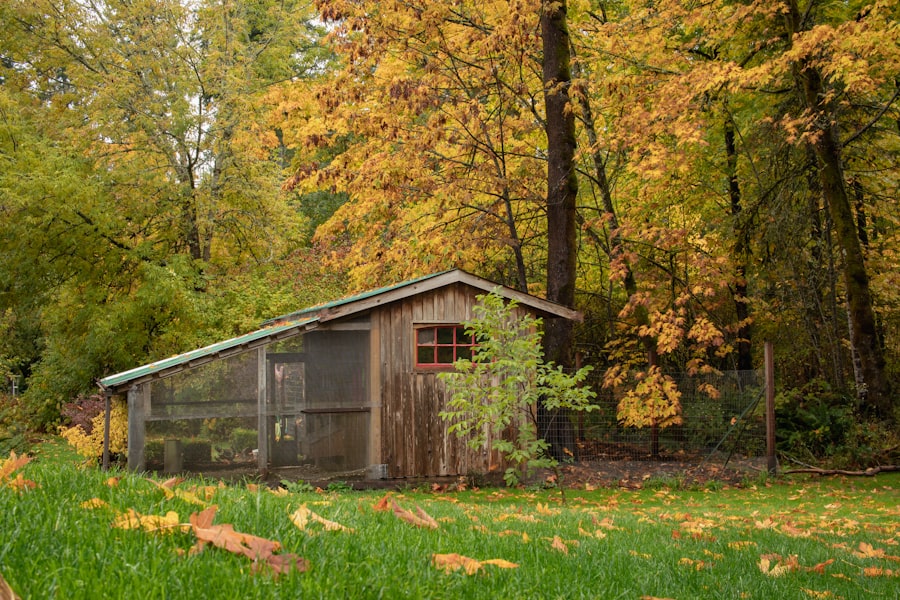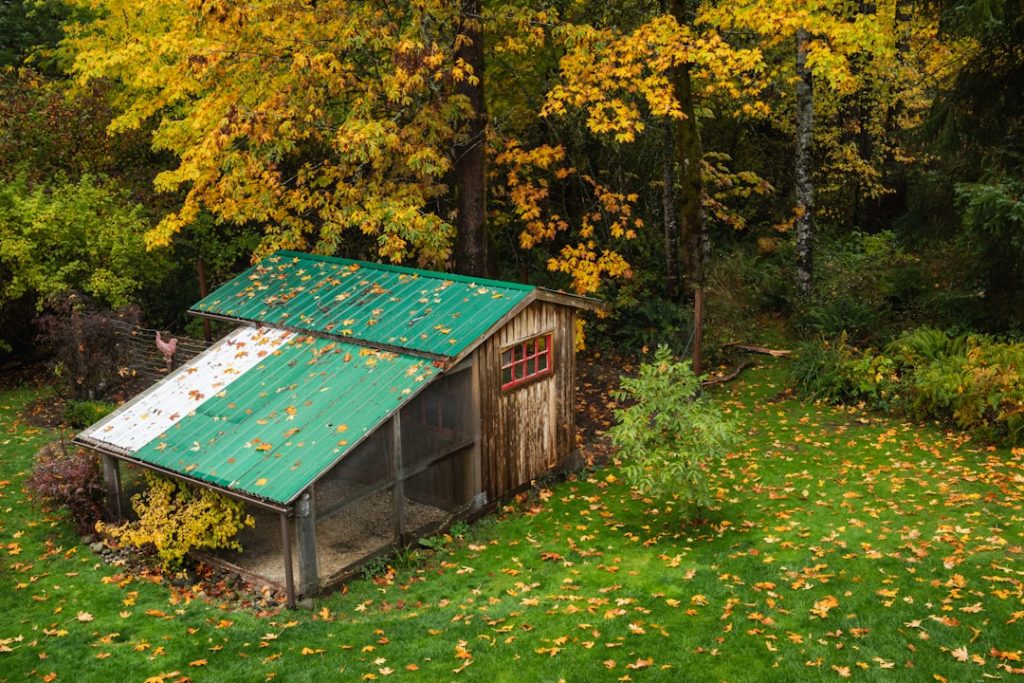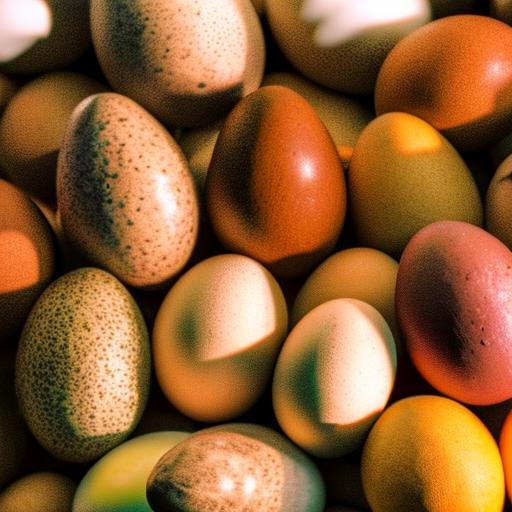Breeding pens are crucial for successful poultry operations. These enclosures provide a controlled environment for chickens to mate, lay eggs, and rear offspring. By offering a dedicated space for breeding, poultry farmers can ensure the health and safety of their birds while optimizing flock productivity.
These pens are instrumental in maintaining genetic diversity and overall flock quality. Through careful selection of breeding birds, farmers can manage the traits passed on to future generations. This selective breeding is essential for developing birds with desirable characteristics such as disease resistance, high egg production, and superior meat quality.
Breeding pens also offer a safe and secure setting for chickens to mate and lay eggs. Separating breeding pairs from the main flock reduces the risk of aggression and injury, while minimizing the chances of eggs being damaged or stolen. These enclosures are vital for maintaining the health, productivity, and genetic diversity of poultry operations.
Table of Contents
- 1 Choosing the Right Location for Your Breeding Pens
- 2 Selecting the Ideal Size and Design for Breeding Pens
- 3 Providing Proper Ventilation and Lighting in Breeding Pens
- 4 Maintaining Cleanliness and Hygiene in Breeding Pens
- 5 Implementing Safety Measures in Breeding Pens
- 6 Monitoring and Managing the Breeding Process in Breeding Pens
- 7 FAQs
Key Takeaways
- Breeding pens are crucial for maintaining the health and productivity of chickens
- The location of breeding pens should be chosen carefully to ensure the well-being of the chickens
- The size and design of breeding pens should be suitable for the number of chickens and their specific needs
- Proper ventilation and lighting are essential for creating a healthy environment in breeding pens
- Regular cleaning and hygiene practices are necessary to prevent diseases and maintain the well-being of the chickens
Choosing the Right Location for Your Breeding Pens
Minimizing Stress and Disturbances
When setting up breeding pens for chickens, the location is crucial for the success of the operation. The ideal location should be away from high-traffic areas and potential sources of disturbance, such as loud machinery or predators. This helps to minimize stress on the birds and create a calm and peaceful environment for breeding.
Accessibility and Management
In addition to minimizing stress, the location of breeding pens should provide easy access for farmers to monitor and manage the breeding process. This includes easy access to water, feed, and nesting boxes, as well as convenient pathways for collecting eggs and performing routine maintenance tasks. Furthermore, the location should also allow for proper ventilation and natural lighting to create a healthy and comfortable environment for the birds.
Environmental Considerations
The location of breeding pens should also take into account factors such as drainage and protection from the elements. Proper drainage is essential for preventing water buildup and maintaining a clean and hygienic environment, while protection from wind, rain, and extreme temperatures will help to ensure the health and well-being of the birds.
Selecting the Ideal Size and Design for Breeding Pens

When it comes to selecting the size and design of breeding pens for chickens, there are several factors to consider in order to create a comfortable and productive environment for the birds. The size of the breeding pens will depend on the number of birds being housed, as well as the breed and size of the chickens. It’s important to provide enough space for each bird to move around comfortably, as well as space for nesting boxes and feeders.
In terms of design, breeding pens should be constructed with sturdy materials that can withstand the wear and tear of daily use, as well as provide protection from predators and the elements. The pens should also be designed in a way that allows for easy access for farmers to perform routine tasks such as egg collection, cleaning, and monitoring the health of the birds. Furthermore, the design of breeding pens should also take into account the natural behaviors of chickens, such as roosting and nesting.
Providing roosting bars and nesting boxes will help to create a more natural and comfortable environment for the birds, which can in turn improve their overall well-being and productivity. By carefully considering the size and design of breeding pens, farmers can create a space that is well-suited for their specific needs and conducive to successful breeding.
Providing Proper Ventilation and Lighting in Breeding Pens
Proper ventilation and lighting are essential components of breeding pens for chickens, as they play a crucial role in creating a healthy and comfortable environment for the birds. Adequate ventilation helps to remove excess moisture, ammonia, and airborne pathogens from the air, which can help to prevent respiratory issues and maintain overall bird health. Good ventilation also helps to regulate temperature and humidity levels within the pens, creating a more comfortable environment for the birds.
In addition to ventilation, proper lighting is also important for breeding pens. Natural light helps to regulate the birds’ circadian rhythms and can have a positive impact on their behavior, health, and productivity. Providing access to natural light can also help to reduce stress and improve overall well-being in the birds.
In cases where natural light is not sufficient, supplemental lighting can be used to ensure that the birds receive an adequate amount of light each day. Overall, providing proper ventilation and lighting in breeding pens is essential for creating a healthy and comfortable environment for chickens to breed and raise their young. By carefully managing these factors, farmers can help to ensure the health and productivity of their flock.
Maintaining Cleanliness and Hygiene in Breeding Pens
Maintaining cleanliness and hygiene in breeding pens is essential for creating a healthy environment for chickens to breed and raise their young. Cleanliness helps to prevent the spread of disease and parasites, as well as reduce stress on the birds. Regular cleaning of bedding, nesting boxes, feeders, and waterers is essential for preventing the buildup of waste and bacteria that can lead to health issues in the flock.
In addition to regular cleaning, proper waste management is also important for maintaining cleanliness in breeding pens. This includes removing soiled bedding and waste material on a regular basis, as well as ensuring that manure is properly composted or disposed of. Good waste management practices not only help to maintain cleanliness but also contribute to overall environmental sustainability.
Furthermore, maintaining hygiene in breeding pens also involves implementing biosecurity measures to prevent the introduction and spread of disease. This includes measures such as controlling visitor access, quarantining new birds before introducing them to the flock, and regularly monitoring the health of the birds. By maintaining cleanliness and hygiene in breeding pens, farmers can create a healthy environment that supports successful breeding and overall bird health.
Implementing Safety Measures in Breeding Pens

Predator Control and Prevention
Securing breeding pens with sturdy fencing or netting is crucial to prevent predators from accessing the birds. Moreover, pens should be designed with features such as predator-proof latches on doors and windows to further deter potential threats.
Safety Within the Flock
In addition to predator control, safety measures should also be implemented to prevent injury or aggression within the flock. This includes providing enough space for each bird to move around comfortably, as well as minimizing potential hazards such as sharp edges or protruding objects within the pens. Furthermore, providing roosting bars at different heights can help to reduce aggression among birds by giving them space to establish their own territories.
Safety for Farmers and Workers
Safety measures should also be implemented to protect farmers and workers who are responsible for managing breeding pens. This includes providing proper training on safe handling techniques, as well as ensuring that equipment such as feeders and waterers are properly maintained to prevent accidents. By implementing these safety measures, farmers can create a secure environment that supports successful breeding while minimizing potential risks to both birds and humans.
Monitoring and Managing the Breeding Process in Breeding Pens
Monitoring and managing the breeding process in breeding pens is essential for ensuring successful outcomes and maintaining overall bird health. This includes regularly monitoring the behavior and health of breeding pairs to ensure that mating is occurring successfully and that both birds are in good condition. Additionally, monitoring egg production and fertility rates can help farmers identify any potential issues early on.
In addition to monitoring individual birds, managing the breeding process also involves keeping detailed records of breeding pairs, hatch rates, and any observed health issues or abnormalities. This information can help farmers make informed decisions about which birds to breed in future generations, as well as identify any potential genetic or health concerns within the flock. Furthermore, managing the breeding process also involves providing proper nutrition and care for breeding pairs to support successful mating and egg production.
This includes providing a balanced diet that meets the specific nutritional needs of breeding birds, as well as ensuring that they have access to clean water at all times. By carefully monitoring and managing the breeding process in breeding pens, farmers can maximize productivity while maintaining overall bird health. In conclusion, breeding pens play a crucial role in maintaining the health, productivity, and genetic diversity of a poultry operation.
By carefully considering factors such as location, size, design, ventilation, lighting, cleanliness, hygiene, safety measures, monitoring, and managing the breeding process in breeding pens, farmers can create a healthy environment that supports successful breeding while minimizing potential risks to both birds and humans.
If you’re interested in learning more about creating the perfect breeding pen for your chickens, check out this article on poultrywizard.com. It provides valuable information on how to design and set up a chicken coop that is conducive to breeding and raising healthy chicks.
FAQs
What are breeding pens for chickens?
Breeding pens for chickens are enclosures or structures designed to house and breed chickens for the purpose of producing offspring with specific genetic traits.
What are the benefits of using breeding pens for chickens?
Breeding pens allow for controlled mating and breeding of chickens, which can help to improve the overall quality of the flock. They also provide a safe and secure environment for the chickens during the breeding process.
What features should a good breeding pen for chickens have?
A good breeding pen for chickens should have adequate space for the chickens to move around, nesting boxes for egg laying, perches for roosting, and easy access for cleaning and maintenance. It should also be well-ventilated and provide protection from predators.
How should breeding pens for chickens be set up?
Breeding pens for chickens should be set up in a quiet and secluded area to minimize stress on the birds. They should be equipped with nesting boxes, perches, and feeders/waterers. The pens should also be regularly cleaned and sanitized to maintain a healthy environment for the chickens.
Are there different types of breeding pens for chickens?
Yes, there are various types of breeding pens for chickens, including individual breeding pens for specific mating pairs, colony breeding pens for multiple hens and roosters, and mobile breeding pens that can be moved to different locations. The type of breeding pen used will depend on the specific breeding goals and management practices of the chicken breeder.
Meet Walter, the feathered-friend fanatic of Florida! Nestled in the sunshine state, Walter struts through life with his feathered companions, clucking his way to happiness. With a coop that’s fancier than a five-star hotel, he’s the Don Juan of the chicken world. When he’s not teaching his hens to do the cha-cha, you’ll find him in a heated debate with his prized rooster, Sir Clucks-a-Lot. Walter’s poultry passion is no yolk; he’s the sunny-side-up guy you never knew you needed in your flock of friends!







